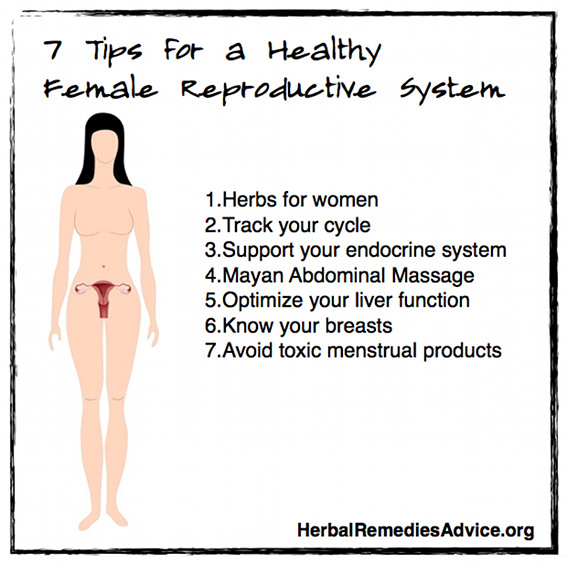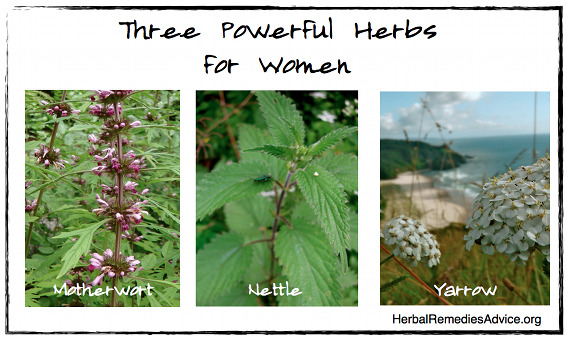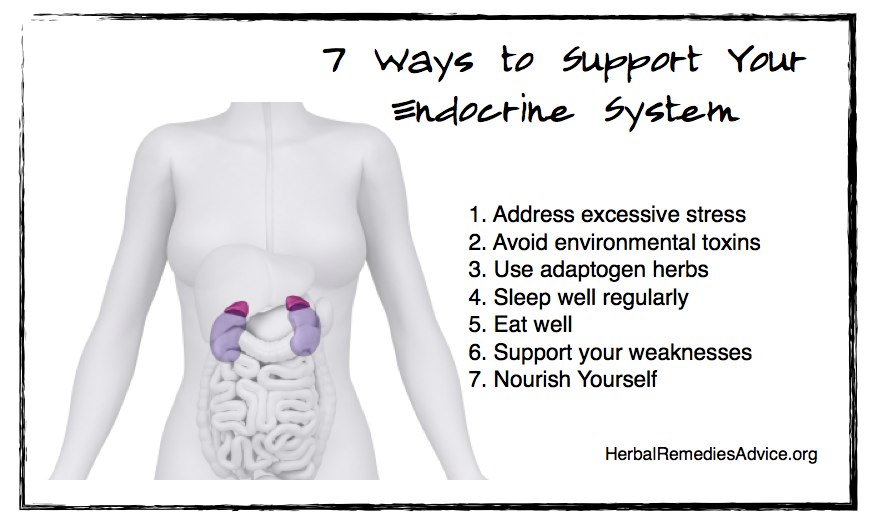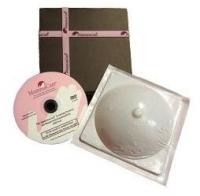Get weekly tips, recipes, and my Herbal Jumpstart e-course! Sign up for free today.

Female Reproductive System
Share this! |
|
|
Like other systems of our body, the female reproductive system tends to get ignored unless something goes wrong. Unfortunately, reproductive system disease is on the rise. From infertility to PCOS to fibroids and menopausal complaints, our reproductive system is under assault! |
Environmental contaminants almost assuredly play a role in many of these diseases, but avoiding harmful chemicals (like plastics and herbicides) is just one step of many in keeping your reproductive system healthy.
The following article gives you seven tips for maintaining the health of your reproductive system, including my favorite herbs for female reproductive system.
You can also review the basic anatomy and physiology of the human female reproductive system here.
1. Herbs for Female Reproductive System
There are many supportive and nourishing herbs that are beneficial for women’s health. Rather than generalize herbs as “women’s herbs” or “men’s herbs”, it’s better to know what you personally would benefit from.
The following herbs for the female reproductive system are some of my favorites for women.
Herbs to build blood
Because of monthly blood loss women can be more susceptible to anemia or, in Traditional Chinese Medicine, Blood Deficiency. Dong quai is often used in formulas for women to build blood and support healthy hormone function. The classical formula Si Wu Tang, which contains dong quai, is often used for this purpose.
Support the uterus
Herbs can also be used to tone and support the uterine tissues. Raspberry leaf is the perfect example of this. For symptoms of a congested pelvis (cysts, fibroids, cramping, etc), pelvic decongestants are often used. Yarrow and Red root are some of my most used.
Tonic Herbs
Shatavari, sometimes called the female ginseng, is an important herb from India that is considered a female tonic. I’m told that women in India commonly take this root their whole lives to support their overall health.
Nourishing Herbs
Nettles and oat straw are mineral-rich plants that also support healthy bones, nails, hair and teeth.
2. Track Your Cycle
Do you keep records of your monthly cycles? It’s amazing to me how many women don’t! Tracking your cycle takes just a few minutes per month and can be a powerful tool to help you honor your cycles and changes as well as be an early warning sign of imbalances.
To track your cycle you can use a notebook or a calendar to mark your first day of menstruation, your last day of menstruation and then your first day of bleeding the next month. You can also keep notes about how you felt during your period. These simple notes can let you know if your cycle is regular or irregular and how long it is.
Here’s a simple guideline on what to keep track of:
- Date started bleeding
- Date ended bleeding
- Flow: heavy, light, constant, variable
- Quality of blood: dark, bright red, clots, etc.
- How you felt: emotionally, energy
- How you took care of yourself: lighter schedule, lighter exercise, favorite foods
- Other symptoms: cramping, headaches, bloating, breast pain, etc
- Date started bleeding (next month):
Here’s a lunar calendar you can use to keep track of your menstruation.
Tracking your menstrual cycles can also help you to plan ways to honor your cycles. Many women find they are happier and healthier if they plan a lighter schedule around their period or choose other ways to honor the complexity of their body’s cycles.
You can also track your fertility cycles using the methods clearly explained in Toni Weschler’s book
Taking Charge of Your Fertility: The Definitive Guide to Natural Birth Control, Pregnancy Achievement, and Reproductive HealthThese simple steps help you know when you are ovulating and when you are about to menstruate. Even if you aren’t using these methods to plan or avoid pregnancy they offer a lot of insight and connection to what is happening inside your body.
After menopause women are undoubtedly still experiencing changes associated with the lunar cycle. Many women choose to pay attention and recognize these cycles even after monthly bleeding stops.
3. Healthy Endocrine System
Like most of the anatomical systems, it’s hard to separate the female reproductive system from other systems in the body. It is especially intertwined with the endocrine system and many of the tips for keeping a healthy endocrine system definitely apply to a healthy female reproductive system.
See my list of 7 Ways to Support Your Endocrine System.
4. Mayan Abdominal Massage
Mayan abdominal massage is a simple massage that promotes circulation and health in the uterus and abdominals. Practitioners across North America have been trained extensively to both give this massage as well as teach people how to perform it on themselves at home. It takes about five minutes to do on yourself and can be one of the most powerful ways you support the health of the female reproductive system tissues.
Find a Mayan Abdominal Massage practitioner near you on the official website.
5. Support Your Liver
Your liver filters blood, which is full of hormones that interact with the female reproductive system. In herbalism we often see a congested or stagnant liver as the root cause for many complaints around menstruation, including pain and cramping, irregular periods, painful breasts around menstruation or ovulation, mood swings and headaches.
There are several different ways a liver issue may need to be addressed and it’s always best to know which particular pattern you are experiencing before applying solutions. However, two gentle therapies that will benefit most people are eating or drinking dandelion roots and eating roasted beets.
6. Know Your Breasts
By now, most women have gotten the message that they should regularly check their breasts for cancer by performing a monthly breast exam.
Unfortunately, very few women actually practice this simple and life-saving method regularly. Forgetfulness and lack of a breast massage habit are certainly to blame for a lot of women.
As humans, we have several ways that we are motivated to act, fear being one of them. Typically, breast massage exams are promoted with a backdrop of fear. Statistics about how many women get breast cancer and the importance of early detection for survival rates are repeated over and over.
And breast cancer is scary! And self breast exams are important. No denying it.
But I propose a different motivation. Breast tissues are full of lymphatic tissues which can become clogged or stagnant. Gentle massaging of the lymphatic system supports lymphatic health, which is great news for avoiding cancer.
To have the best results, daily or every-other-day massaging of the breasts is ideal. You can also use beautiful creams made with herbs that support the lymph tissues. (Search PoppySwap.com for artisanal herbal creams made by small businesses.)
Instead of simply examining yourself once a month, regularly massaging nourishing creams into your breasts not only supports the tissues in a better way but also gets you more familiar with your breast tissues so you’ll more easily note any changes.
Here’s one example of how to do a breast massage from Jennifer Shelton:
- Start by using the hand opposite the breast you massage (right hand, left breast, left hand, right breast). Begin with light to moderate pressure using circular strokes working out from the nipple and into the underarm and then back into the middle of your chest (breast bone)
- Using a circular motion, just move your fingers around the breast.
- Gently massage and knead each breast. You can gently lift each breast and gently apply pressure. Use only light to moderate pressure as this will help move fluids out of the breast.
- Using both hands, gently twist each breast in a kind of wringing motion
- Again, with the opposite hand, use the flat part of your fingers to gently lift the tissue beginning at the underarm toward the nipple.
- Place your fingers on your breastbone until you find the valleys in between your ribs. Using your fingers, gently follow the grooves of your ribs and move all the way up from your breastbone to collar bone. Then move your fingers back to your breastbone and gently follow the grooves of your ribs all the way to the bottom of your rib cage.
Also, once a month do a more thorough exam. I recommend the
It includes a 45-minute DVD and a practice model to help women understand exactly what they should be aware of in their breast tissues.
MammaCare is the scientifically-validated method of breast self-examination created with the support of the National Cancer Institute. Accurate breast self-examination means learning what to feel for. Watching a video or reading a pamphlet is simply not enough. Because breast examination is a tactile skill that depends on trained fingers, MammaCare produced an affordable NEW Personal Learning System to train the sense of touch on a lifelike breast model. The model simulates the feeling of normal nodular breast tissue and suspicious tumors. Research demonstrates that fingers can detect suspicious simulated breast tumors as small as 3 millimeters (smaller than a pea).
7. Avoid Toxic Menstrual Products
A woman can easily use 10,000 disposable menstrual products during her lifetime. Try to imagine how big of a pile that is. Now times that by all the women using disposable products. That’s a staggering number to consider!
Not only is this disposable waste horrible for the environment, it’s also not healthy for women. Most pads and tampons contain harmful chemicals and are placed near mucus membranes that easily absorb these toxins.
I’ll admit that the first time I heard of alternative reusable menstrual products I thought it was pretty gross. But I was so horrified about the waste of disposables that I agreed to give it a try. I was instantly converted and I’ve never looked back and that was fourteen years ago. I estimate that at least 3500 disposable products have been saved from the landfills because of my choice to switch to reusables, and I’m just one person!
Alternative menstrual products are not gross. In fact they are easy to use, better for the environment and safer for your health. While they can sometimes be initially expensive, they will save you money over time.
There are many varieties of alternative menstrual products, from reusable latex or silicon cups to soft cloth pads. If you are handy with a sewing machine you can even sew your own cloth pads.
Glad Rags and Lunapads also both make cloth pads.
Summary
With the huge rise in female reproductive system disease you can no longer afford to sit around and wait to see if you will fall prey to the statistics. Instead, you need to take pro-active steps to support the health of your reproductive system. The earlier you stop a minor problem from becoming a big one and the sooner you reverse a chronic disease, the more chance you will have of long-term health and well being.
Using herbs for the female reproductive system is one powerful way to promote overall health. However, it is just one piece of the puzzle. Avoiding plastics, a healthy diet, avoiding toxic menstrual products, supporting the health of your liver, and regular lymphatic breast massage are some of the other many ways you can have a positive impact on your health.
Female Reproductive System Problems

Rosalee is an herbalist and author of the bestselling book Alchemy of Herbs: Transform Everyday Ingredients Into Foods & Remedies That Healand co-author of the bestselling book Wild Remedies: How to Forage Healing Foods and Craft Your Own Herbal Medicine. She's a registered herbalist with the American Herbalist Guild and has taught thousands of students through her online courses. Read about how Rosalee went from having a terminal illness to being a bestselling author in her full story here.



